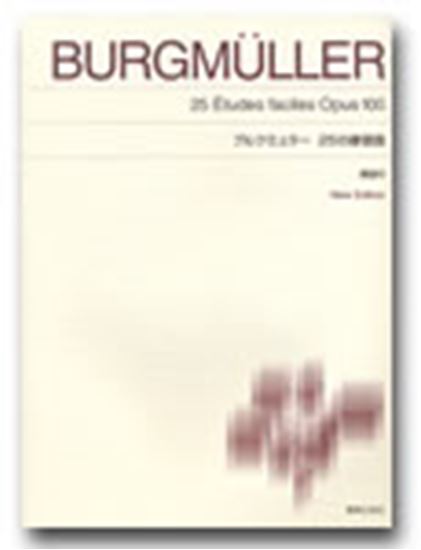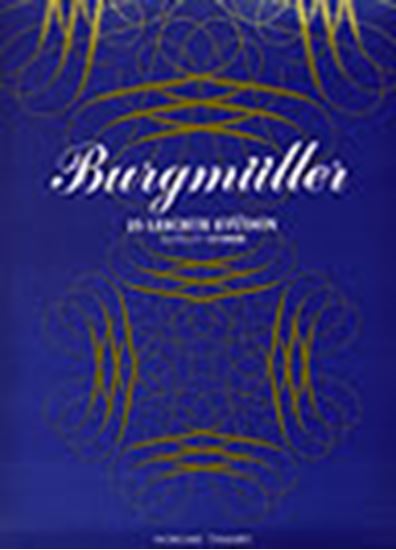Burgmüller, Johann Friedrich Franz : 25 Etudes faciles et progressives, conposées et doigtées expressément pour l'étendue des petites mains Douce plainte Op.100-16
Work Overview
Genre:etude
Total Playing Time:1 min 00 sec
Copyright:Public Domain
Additional Notes:表記ゆれの例: 小さな嘆き あまえた嘆き ちょっぴり不満 ちょっとした悲しみ
Commentary (3)
Author : Sato, Takashi
Last Updated: January 31, 2022
[Open]
Author : Sato, Takashi
This piece has a mysterious title and a mysterious atmosphere. "Dolente" means "with sorrow." Pay close attention to the sense of tonality in G minor. In measure 7, the bass part disappears, leaving only one voice, but harmonically it is a double dominant. Don't miss the sequence (repetition of the same pattern) in measures 11-12 relative to measures 9-10, and the modulation to the relative major (B-flat major).
Performance Points (Original Tempo ♩=126)
While the sixteenth-note accompaniment pattern is moving, try to continuously follow the long notes of the melody with your ear. Execute the handover from the left hand to the right hand in measure 7 smoothly. The right hand in measures 13-14 should sing expressively; never peck at the keys. Apply weight slowly to long notes to produce a rich resonance. There are several ways to conclude the final measure. Try to find the way that feels most natural to you.
(From To-on Edition "Burgmüller 25 Etudes" (NS70))
Author : Iida, Arisa
Last Updated: March 15, 2018
[Open]
Author : Iida, Arisa
Musical example provided by: Ongaku no Tomo Sha
Author : Ooi, Kazurou
Last Updated: May 10, 2019
[Open]
Author : Ooi, Kazurou
This piece is conceived more from vocal ideas than instrumental ones. The beauty of the melody is determined by distinguishing the accompaniment from the vocal line as much as possible. What must be remembered when playing this piece is to recreate a duet. In the first half, up to measure 4, the right-hand melody constitutes the vocal part, representing the first singer. The second singer enters in the left hand from the upbeat of the third beat of measure 4. The second singer concludes on the first beat of measure 7, and from the second beat, the first singer resumes. Since there is no accompaniment in measure 7, one may take improvisational time.
The challenging sections in this piece are the staccato parts in measures 10 and 12. Although crescendos and diminuendos are indicated in the Zen-On edition, executing them is quite difficult. In essence, these two measures must be played without dynamic flatness.
As mentioned previously, the accompaniment in this piece is written in 16th notes. The challenge lies in how softly (ppp) one can play this.
Arrangements & Related Works(8)
Oba, Harumi: 小さな嘆きはタンゴにのせて(「25の練習曲」より/原曲:ブルグミュラー)
Total Performance Time: 1 min 30 sec
Hashimoto Reiko: Douce plainte
Total Performance Time: 1 min 30 sec
Nakatani, Mikito: Douce plainte
Total Performance Time: 1 min 35 sec
PTNA & Partner Channel Videos(19items) View More
Sheet MusicView More
Scores List (24)

(株)東音企画(バスティン)

(株)東音企画(バスティン)

(株)東音企画(バスティン)

(株)全音楽譜出版社

(株)ドレミ楽譜出版社

(株)音楽之友社

KMP(ケイ・エム・ピー) ケイエムピー

(株)ドレミ楽譜出版社

ハンナ(ショパン)

(株)ヤマハミュージックエンタテインメントホールディングス

デプロMP

(株)ドレミ楽譜出版社

(株)全音楽譜出版社

(株)ドレミ楽譜出版社

カワイ出版

カワイ出版

デプロMP

(株)ヤマハミュージックエンタテインメントホールディングス

デプロMP

(株)音楽之友社

(株)共同音楽出版社

Neil A. Kjos Music Company




















